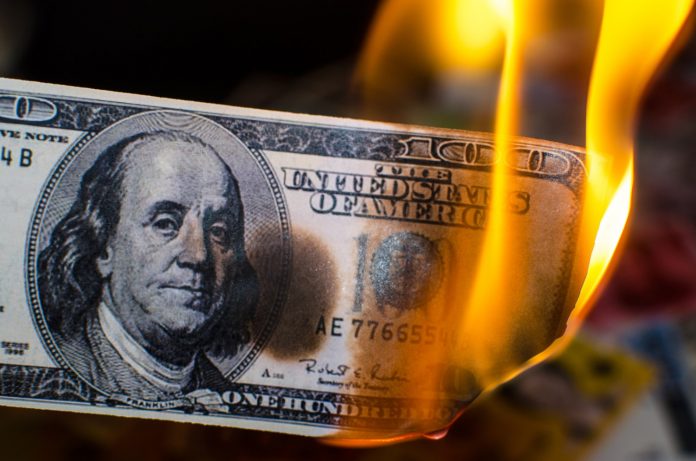With Big Tech leading the way, Wall Street enjoyed a positive end to an impressive first half of the year today. The latest data also suggested a steady cooling of inflation.
The Dow lagged, rising 0.7% through noon while the S&P 500 gained by 1.1%. The Nasdaq Composite outperformed, advancing by 1.5%.
Heavy-hitting technology stocks, that played a significant role in the 2023 rally, continued their winning streak this morning. AI leader Nvidia soared 4%, pushing its yearly gains to a whopping 190%. Big names like Meta Platforms, Microsoft, and Netflix experienced an increase of more than 2% each. Apple also had a good day, with a 1.6% rise, pushing its market cap over the coveted $3 trillion mark.
But not all shares followed the upward trend; despite the overall market positivity, Nike’s shares dipped by 2%, following its report of weaker-than-expected quarterly profits.
The Federal Reserve’s favored inflation indicator, the Core PCE Deflator, showed an increase of 4.6% YoY. Though this is slightly cooler than the +4.7% expected gain, it indicates that core inflation remains stubbornly high. The headline PCE, for the first time since April 2021, dropped below 4.00% to 3.8%.
Further scrutiny was put on the Fed’s view on Services inflation, excluding Shelter, with the PCE-equivalent demonstrating its persistence at high levels.
Both Personal Income and Spending saw MoM increases, with incomes surpassing expectations, but spending fell short (+0.4% vs +0.3% exp and +0.1% vs +0.2% exp, respectively). On a YoY basis, May saw a slowing in Spending growth while Income growth remained flat.
Once adjusted for inflation, ‘real’ personal spending remained static in May (with a 2.1% YoY rise), but wages were accelerating. Private worker wages experienced a 5.8% YoY rise, marking the highest since October 2022, while government worker wages rose 5.5%, the highest since May 2022.
Consequently, the savings rate edged up to 4.6% from 4.3%. This, combined with stagnating spending and sticky core PCE, hinted at the possibility of a looming stagflation.
Jamie Cox, managing partner for Harris Financial Group, interpreted this as good news in the fight against inflation nonetheless.
“If you don’t believe disinflation is happening, you aren’t paying attention. The Fed was right to pause and needs to hold firm at these levels to prevent overcorrecting and causing an unnecessary recession to fight a beast that is now under control,” Cox remarked.
As today’s session signaled not only the end of June but also the close of the second quarter and first half of the year, investors are paying close attention. The past six months have witnessed a significant comeback in growth names that had a tough 2022, powered by the prospects of artificial intelligence and the anticipation of an end to the Fed’s rate campaign, which propelled major tech entities to unprecedented heights.
Now, though, the market anticipates a July hike with some certainty. The CME Group’s FedWatch Tool showed an 86.8% chance of a 25 basis point rate increase next month. That was unchanged from yesterday despite this morning’s PCE “miss.”
But more hikes also suggests that the economy won’t enter a recession any time soon, which could lead to more market gains despite an already impressive June.








